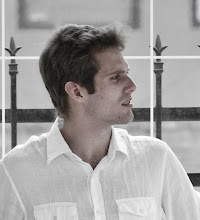
During the course of Stanley Kubrick’s A Clockwork Orange, the viewer is repeatedly forced to acknowledge the medium. This primary emphasis on presentation rather than content exemplifies the film as Formalist filmmaking. Even the sequences within the film that veer close to Realism are always earmarked with a formalist touch. Two such instances include long takes during the 360° shot in the record store that ends with a cut that crosses the 180° line making the edit apparent, as well as the twanging sound effects in accordance with the baton hits during the drowning.
According to Sergei Eisenstein (one of the founding fathers of Formalism) the most important tool of cinema is montage, “which may be roughly defined as the reinforcing of the meaning of one image by association with another image not necessarily part of the same episode.” (Bazin) In this regard, one of the film’s most formalist sequences occurs around the twenty-minute mark. Upon returning home from his boundless night of immoral debauchery, Alex plops down on his bed in a childlike manner and through voice-over narration, declares all he needed to give the night the perfect ending was “a bit of the old Ludwig Van.” Here the viewer enters into a sequence that employs Eisenstein’s primary requirement for montage to create meaning: collision. (Eisenstein) In fact, Kubrick achieves a type of montage prior to splicing shots together. In a single shot, the camera starts on the naked woman in the painting hanging in Alex’s room and slowly tilts down, revealing Alex’s pet snake slithering on a tree branch directly in front of the woman’s genitals and concludes on a display of four porcelain Jesus statues. The iconography appears biblical as the snake’s relation to the naked woman harkens to the Adam and Eve mythology. Furthermore, the multiple Jesus figures are depicted without cross and raising a clenched fist heavenward in a “celebration of pleasure” to the fall of Eve. (Nelson)
Following this shot is a rapid succession of extreme close-ups of different body parts of the Christ interrupted by an approximately 20 second close-up of Alex, whose arm movement and facial expression imply he is gratifying himself. This long shot (in relation to the preceding and following edits) segues into the classical Eisenstein montage sequence. Alex prefaces “As I slooshied, I knew such lovely pictures.” The viewer receives a quick shot of Beethoven’s eyes followed by a series of non-diegetic inserts juxtaposed with a recurring shot of Alex dressed like a vampire. First a shot of a woman being hanged; followed by Vampire Alex with fangs and blood on his mouth; an explosion with dirt and rocks flying toward the camera; return to Vampire Alex; train car exploding; Vampire Alex; clip from One Million Years B.C. of an avalanche of boulders; Vampire Alex; and finally a volcano erupting and spewing out lava. This final shot clearly symbolizes ejaculation and henceforth concludes the sequence. The constant repetition of the Vampire Alex shot suggests that like a vampire, Alex’s sustenance and vitality depend on feeding off violence and savagery.
The physical construction of the film is impossible to ignore. Kubrick achieves this formalist state by employing a medley of visual and aural techniques that consistently reveal the filmmaker’s orchestration. In effect, Kubrick embraces the conventions of Formalism while grounding the film in Realism by way of long takes and elaborate sets that create an alternate world; a world able to be manipulated as the director deems worthy.
Works Cited
Andre Bazin, “The Evolution of the Language of Cinema,” in Film Theory and Criticism, ed. Leo Braudy and Marshall Cohen (Oxford: Oxford University Press, 2004), 42.
Sergei Eisenstein, “Beyond the Shot,” in Film Theory and Criticism, ed. Leo Braudy and Marshall Cohen (Oxford: Oxford University Press, 2004), 19.
Thomas Allen Nelson, Kubrick: Inside a Film Artist’s Maze (Bloomington: Indiana University Press, 1982), 152.


No comments:
Post a Comment